Open Source Architecture Manifesto by Carlo Ratti Associati
Visitors to the Adhocracy show at the Istanbul Design Biennial are confronted with a plotter taking the text of the Open Source Architecture Manifesto from a Wikipedia page and writing it onto a wall. (+ slideshow)
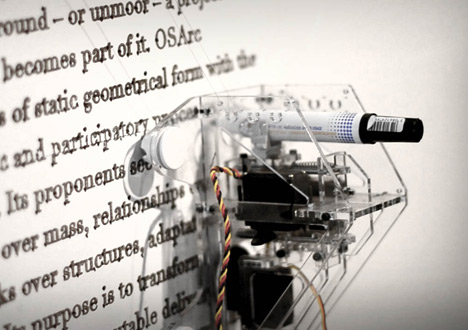
Created by Walter Nicolino and Carlo Ratti of Carlo Ratti Associati, the plotter updates the text as the Wikipedia page changes.
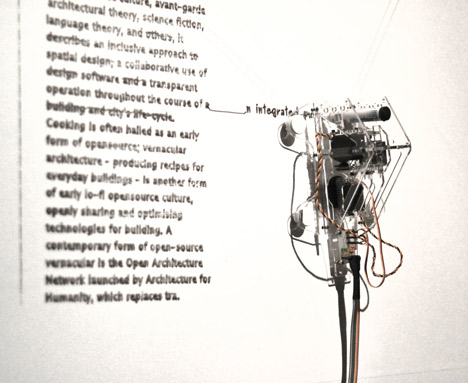
The project began last year when Joseph Grima, editor of Domus magazine and curator of the Adhocracy show, asked Ratti to write a manifesto for open-source architecture.
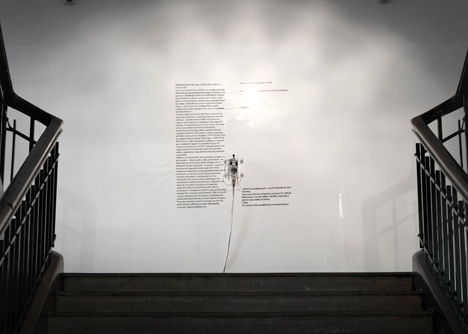
"I said yeah sure, but let’s do it in an open-source way," Ratti told Dezeen. "So we set up a page on Wikipedia."
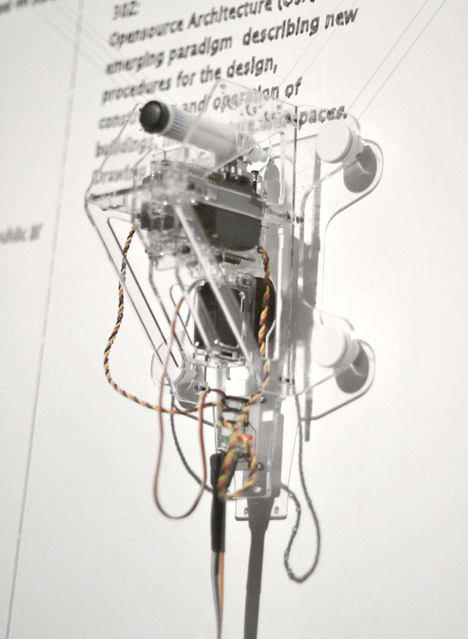
Ratti, who is director of the Senseable City Lab at MIT, invited contributors including Nicholas Negroponte, John Habraken, Paola Antonelli and Hans Ulrich Obrist to contribute to the page to create an evolving document that was published in Domus in June 2011.
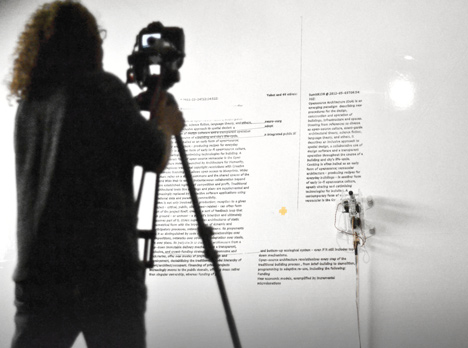
"It’s funny because the editors of Wikipedia kept erasing it until it was published in Domus, and then it became kind of 'legal'," says Ratti. "So now it is a page on Wikipedia and people keep on adding to it, changing it and so on. It keeps on evolving."
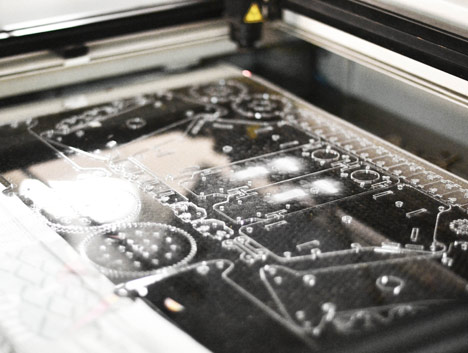
In Istanbul the suspended plotter writes the manifesto on a large whiteboard mounted on the wall on the staircase at the Adhocracy exhibition, crossing out and overwriting passages as they are edited on Wikipedia and starting afresh as soon as the text is completed.
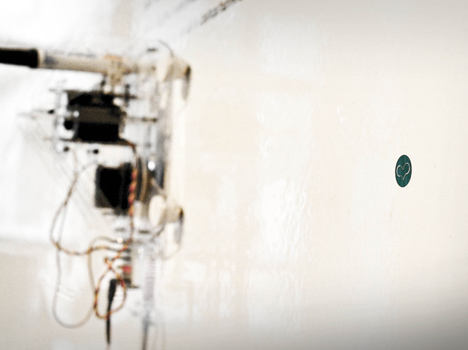
The plotter is based on similar principles to Hektor, a wall-mounted plotter that paints with a spray can. "There was a prototype of a similar plotter called Hektor – there’s a couple of them online that were doing things on a piece of paper," says Ratti. "But here the idea was to do it on an architectural scale, on a big wall."
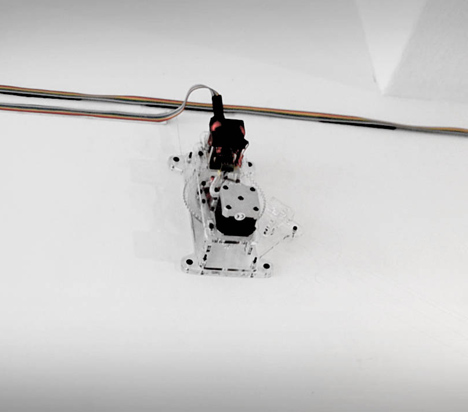
See our interview with Joseph Grima about the Adhocracy exhibition and read more about open design on Dezeen.
Here's some text from Carlo Ratti Associati:
Open Source Architecture Manifesto
2012 / Istanbul TURKEY
When Domus approached Carlo Ratti to write an op-ed on the theme of opensource architecture he responded with an unusual suggestion: why not write it collaboratively, as an open-source document? Within a few hours a page was started on Wikipedia, and an invitation sent to an initial network of contributors. The outcome of this collaborative effort is presented in an article published in Domus in June 2011. The article is a capture of the text as of 11 May 2011, but the Wikipedia page remains online as an open canvas — a 21st century “manifesto” of sorts, which by definition is in permanent evolution.
A year after the article’s publication, in the summer of 2012, the idea of recapturing the text in its current state of mutation was born. However, it was not to be envisaged as a new publication, but rather a piece of the exhibition, Adhocracy, curated by Joseph Grima for the first Istanbul Design Biennal. The studio carlorattiassociati envisioned a canvas on which a free flowing pen writes, erases and constantly rewrites the different versions of the Wikipedia page, indicating corrections, deletions and development of the manifesto in its continuous state of change.
A vertical plotter on a large whiteboard welcomes visitors to the exhibition; its contents are generated in real-time from a script that constantly compares the various versions of the Wikipedia page. Starting each time from one of the numerous updates written online, the pen retraces its steps to incorporate all the users’ contributions. Once it reaches the end, it begins once again, relentlessly in pursuit of the latest version of our open source manifesto, OsArc.
For more information, and to read the article published in Domus (June 2011) visit: senseable.mit.edu/osarc
For details of the exhibition Adhocracy, part of the Istanbul Design Biennal running until December 2012 visit: istanbuldesignbiennial.iksv.org/adhocracy.
Team: Carlo Ratti, Walter Nicolino, Pietro Leoni (project leader), Antonio Atripaldi, Giovanni de Niederhausern, Enrico Gueli, Franco Magni
Special thanks to Officine Arduino / FabLab Torino